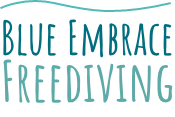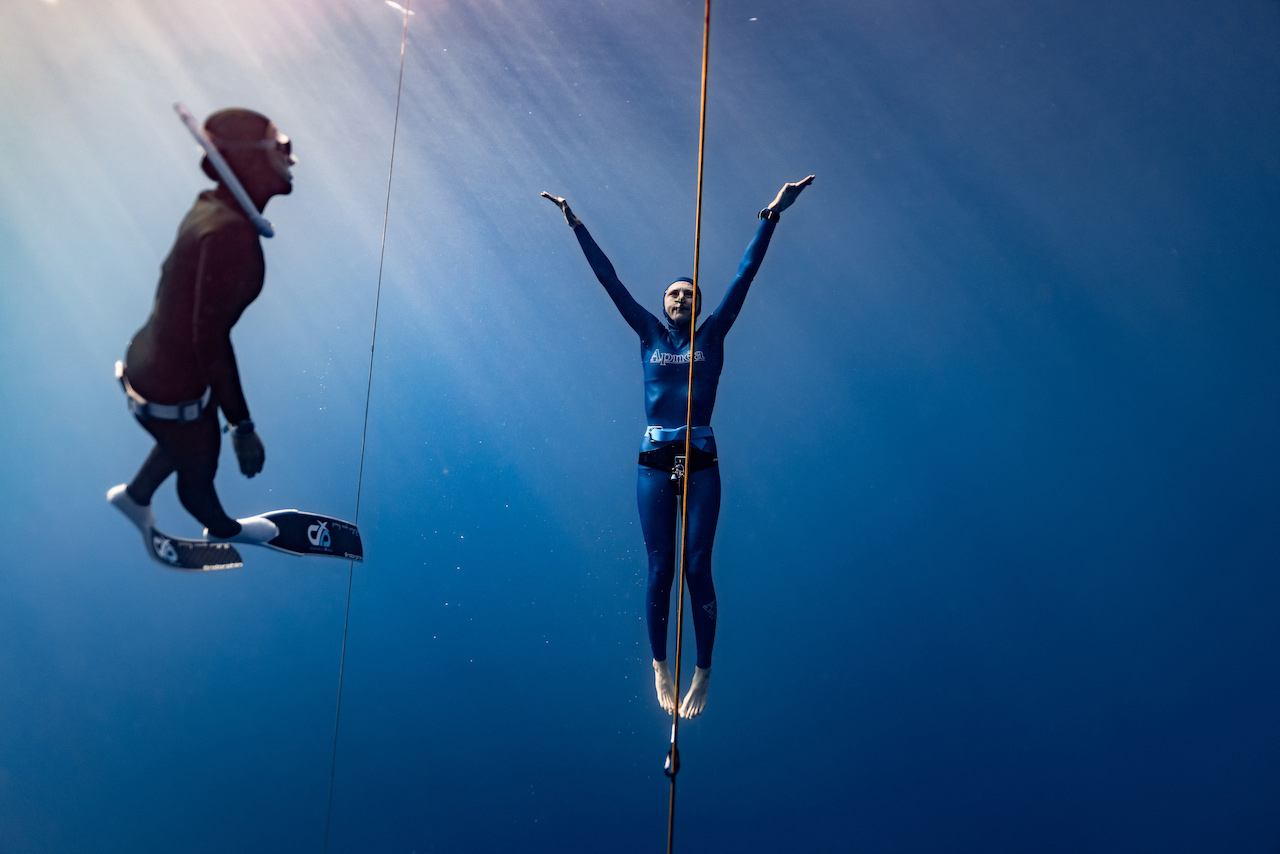For centuries people have been diving on one breath to forage for food, explore the oceans and compete with one another. For many people it is a hobby, for others it is a sport and for some it is a way of exploring their inner world or the ocean.
Although most people know that freediving depends on your ability to comfortably and safely hold your breath for a period of time, many have not been exposed to the world of competitive freediving or will never have encountered the requirements of the different disciplines within the sport.
For most of us, that exposure begins when we do our first course and come across the different skills needed to dive on the line to a specified depth, dive by swimming horizontally over a distance under water and perform timed breath holds in water.
For many freedivers, turning up at their first pool training session or club dive after their course is a step towards developing their curiosity beyond their initial reasons for trying freediving. For some, this will mean beginning to train skills they hadn’t previously known they would enjoy, or even entering their first competition.
Competitive freediving is judged on the horizontal distance covered, depth reached or simply time spent on breath hold. There are specific protocols which need to be completed on surfacing before the judges deliver their verdict, granting a white, yellow or red card. Divers must remove any equipment such as their mask, goggles or noseclip, and be able to say ‘I’m okay’ and give the okay sign. The ability to do this shows that the diver has performed their dive safely. Points are then given depending on the time / distance / depth achieved.
Depth disciplines
Depth disciplines measure the depth attained in a vertical swim. These competitions can take place in lakes, quarries and the ocean. The diver descends down a vertical, weighted rope to a pre-announced depth to retrieve a tag, before ascending to the surface. They are connected to the rope using a lanyard for safety. The diver should not touch the rope except within a designated area (sometimes called the ‘candy-cane’) near the plate, which they may grasp to help them make a turn. The only exception to this is in the discipline of free immersion.
There are four main depth disciplines:
Constant weight bi-fins (CWT-BI) – The diver uses bi-fins to reach the predetermined depth.
Constant weight (CWT) – the diver uses a monofin for propulsion on the descent and ascent. Like in the pool, the movement is similar to dolphin or fly kick.
Free immersion (FIM) – the diver pulls themselves down and back up the rope. This is the only discipline where the diver is permitted to touch the rope outside of the allocated space, above the bottom plate. The diver is only allowed to touch the rope for propulsion, no other equipment may be used.
Constant weight no fins (CNF) – the diver uses only their own arms and legs to propel themselves using a modified breaststroke kick. CNF is sometimes considered to be the ‘purest’ form of freediving, since the diver cannot rely on equipment, just their own power.
Pool disciplines
Pool freediving offers divers the opportunity to train year-round and when they may not have easy access to depth. Dynamic disciplines are usually conducted in 25M or 50M swimming pools. Divers weight themselves to be neutrally buoyant in a horizontal position, mid-way in the pool. They also wear thin, neoprene suits to increase hydrodynamics and retain warmth since pool diving is about conservation of energy and oxygen to attain distance rather than speed.
Dynamic (DYN) – This is the horizontal distance covered on one breath wearing a monofin for propulsion. As both feet are connected to the fin, the technique is similar to dolphin or butterfly kick. In all distance disciplines, divers aim to conserve energy and oxygen to prolong the distance they can cover.
Dynamic Bi-fins (DYN-BI) – The horizontal distance covered on one breath wearing bi-fins, using a flutter kick.
Dynamic no fins (DNF) – The diver relies on their own propulsion, using a technique similar to breaststroke to swim horizontally below the surface
Static Apnea (STA) – During a static dive, divers lie face down in the water, floating stationary on the surface. The aim of a static dive is to hold your breath for as long as possible. This is as much a mental test as it is physical. Divers wear wetsuits to keep warm as they can quickly become cold when not moving.
Why you should practice all aspects of Freediving
Whatever your initial reasons for wanting to explore freediving, you will find that trying out different disciplines will keep your diving fresh and continue to challenge you, helping you to grow into a more confident diver. Not everyone who practises sport freediving wants to compete.
Wanting to grow as a diver, maintain fitness, extend your breath hold and improve flexibility for recreational freediving are all good reasons to explore beyond first skills. For many people, just the pride of a new personal best is an intrinsic motivator to try new things and keep learning.
At Blue Embrace, we believe freediving has something to offer everyone. Our courses are suitable for anyone over 16 who is medically fit. Freediving may appear to be a superpower, but it’s something which can be taught and developed with patience and curiosity about your own ability to grow. We can teach you the skills you need to dive safely and comfortably. Our focus is always on making sure you have an enjoyable time in a safe environment.
Whether you want to learn to dive for the first time, acquire the basics of a new discipline, improve your technique or even train for a competition, we can find a course or develop a session to suit your individual needs. Don’t hesitate to get in touch and we will do all we can to help you on your freediving journey.


Leave A Comment